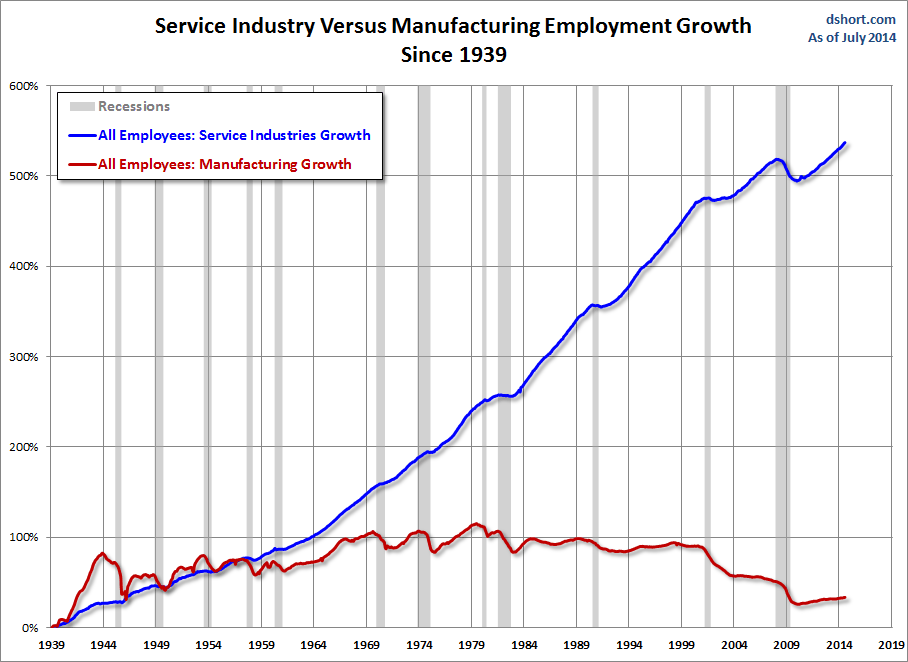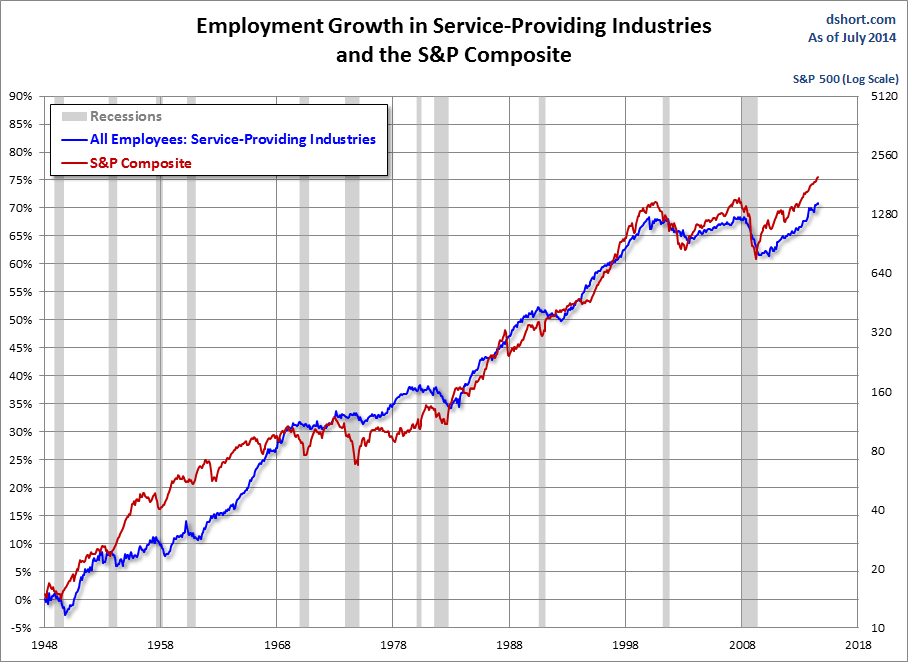In honor of Labor Day, which was signed into law as a national holiday in 1894, I'd like to share some graphical snapshots of a major change in our nation's workforce over the decades.
The Department of Labor's Bureau of Labor Statistics has monthly data on employment by industry categories reaching back to 1939. The first chart below is an overlay of the compete series of employment numbers for the two major categories, manufacturing and services industries.
When I say major, I'm referring to the complete domination of the labor market by these two industries -- anywhere between 91.3% to 95.3% of total nonfarm employment.
In 1939 service industries employed more people than manufacturing by a ratio of 2.1-to-1.0. But that ratio was soon to change. For a clearer picture of the relative growth of manufacturing and services, the next chart illustrates just that: The cumulative growth of the two series.

The next chart shows the same data adjusted for population growth, I've used the Bureau of Labor Statistics' Civilian Labor Force as the "deflator", hence the 1948 start date, which was when the Civilian Labor Force 16 and Older began being tracked in the monthly Household Survey.

During WWII, manufacturing employment rose dramatically, but it began returning to its pre-war pattern after the war ended. Thereafter, manufacturing employment has had a complex history with a peak in the late 1970s and a secular decline thereafter. Here are some observations about manufacturing and services over the past seven-and-a-half decades:
- Manufacturing is far more sensitive to the business cycle. Compare, for example, the relative behavior of manufacturing and services relative to the recession bars.
- Growth in services began accelerating in the 1960s and accelerated at an increasing rate after the double-dip recession in the early 1980.
- Manufacturing accelerated at a slower pace in the 1960s and then oscillated around a flat line in sync with the four recessions from 1970 to 1982.
- Manufacturing employment peaked in June 1979. It never recovered from the double dip recession of 1980-1982.
- The spring of 1998 was the an interim high for manufacturing jobs, but with the recession of 2001 began a 35% decline in jobs from the 1998 peak to below 9% shortly after the Great Recession. Manufacturing has essentially flatlined since the end of the recession.
- Services industry employment began leveling off with the onset of the 2001 recession. Growth began accelerating again in 2004, but the rate of growth was well below what we saw in the 1980s and 1990s.
- Services employment hit a peak in January 2008, the second month of the Great Recession. It sharply declined after the recession, hitting an interim low in April 2010. It has since recovered to a new high in June of this year.
- In 1939 the services to manufacturing employment ratio was 2.1:1. Today it is 9.9-to-1.
I'll close with a curious overlay of the population-adjusted growth of the services industries since 1948 and S&P Composite (log scale, right axis). The correlation is quite remarkable.

